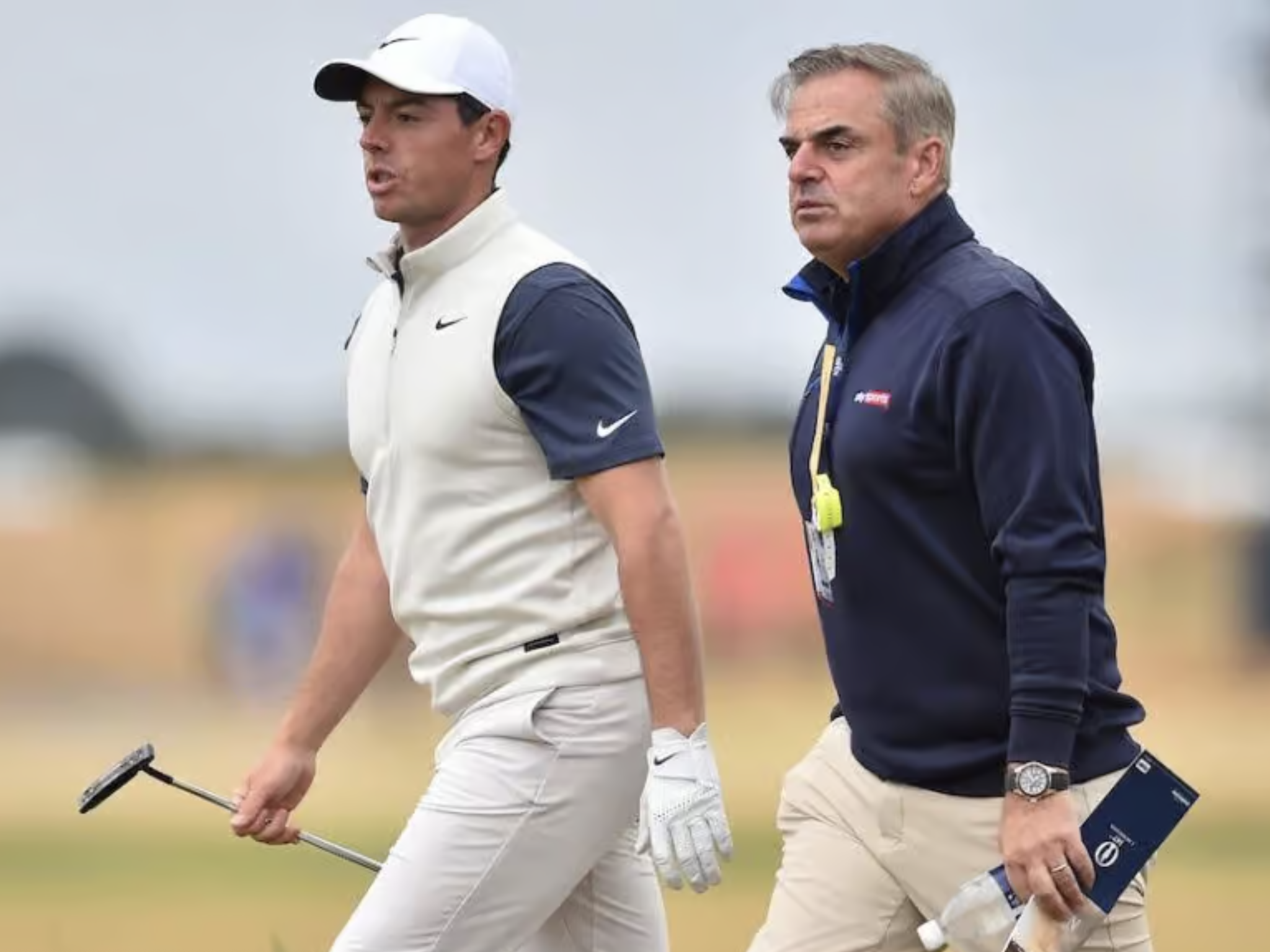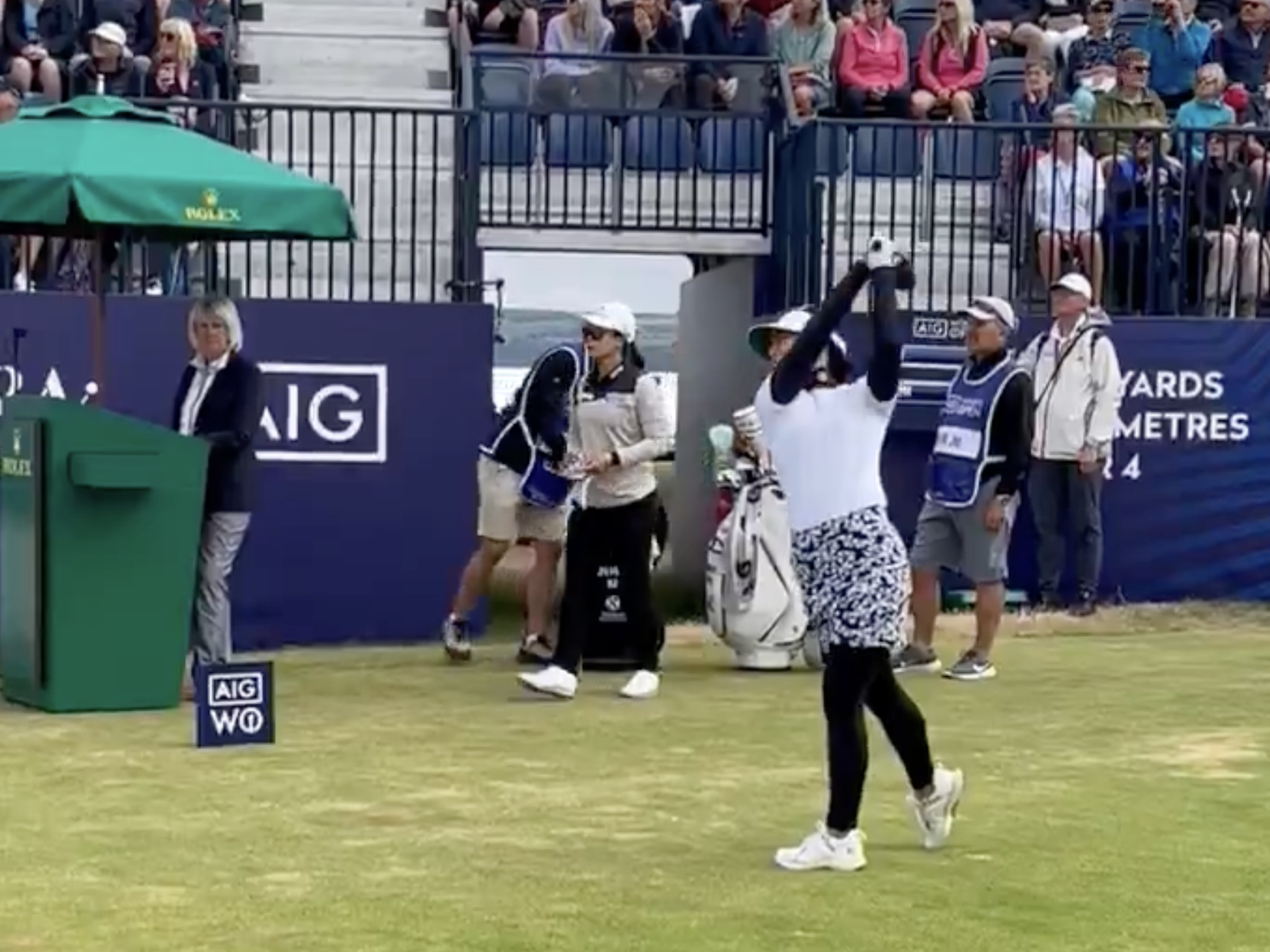19th Hole
Paul McGinley U.S. Open Q&A: The flaw in Bryson’s swing, Rory’s struggles on tough setups, and is Brooks done contending for majors?

With the 2025 U.S. Open fast approaching, the spotlight shifts to Oakmont — one of golf’s most unforgiving tests. Ahead of the event, Golf Channel and Sky Sports analyst Paul McGinley sat down with myself, Gianni Magliocco, to break down some of the big talking points and storylines heading into the championship.
Within the discussion, McGinley reveals why he believes players must be required to speak to the media, the flaw in Bryson DeChambeau’s swing that’s causing poor iron and wedge play, and why Rory McIlroy might finally be equipped to handle a brutal U.S. Open setup.
Check out the full Q&A below.
Gianni: Rory McIlroy has come close at the last two U.S. Opens, yet he’s still never won a professional tournament where the winning score wasn’t double digits under par.
With this year’s U.S. Open expected to be a war of attrition with a winning score over par, what is it about challenging course conditions that McIlroy has historically struggled to overcome?
Paul: Rory plays best when he’s on the front foot, playing aggressively and taking on the golf course. It’s a style of golf that is charismatic, engaging, and exciting. It’s the reason he’s many peoples favorite player to watch. While it’s a style of golf that comes naturally to him, it’s also a style that leans away from the dog fighting, patient style that is often required to win a U.S. Open.
I do feel however, that he is much better equipped now than ever before to play this style of golf. The proof is that we now see him winning events with his B game, like he did this year at TPC Sawgrass — as he found a way to dig out scores when not quite on his game.
This U.S. Open will be a really good opportunity to watch and assess this newfound versatility as a player. His resilience has always been underestimated, and the fact that he is a more complete player now than at any other stage in his career gives reason to believe that he is more capable of winning on tougher setups now than ever before.
Gianni: You recently dismissed Bryson DeChambeau’s claim that he needs to find a golf ball that flies straighter following his PGA Championship performance. Instead, you said that he needs to change his swing—pointing to his poor play at the first two majors this year with his irons and wedges.
What exactly does Bryson need to change in his swing?
Paul: While Bryson ranked very high in driving, putting, and around the green, his iron play relative to the field was really poor at both the Masters and the PGA Championship this year. Now that we have the shot tracer available for TV coverage, we can see the prominence of a right-to-left shape with his irons and can see him struggling in a right-to-left wind as well as a right pin position.
While I’m no expert on the golf swing, particularly when it comes to a pioneer like Bryson, his swing does look too much in-to-out to me.
Gianni: Considering Rory’s lack of pedigree for winning on tough setups, and Bryson’s struggles with his irons and wedges, Scottie Scheffler is the undeniable favorite at Oakmont.
What factors—whether in his game or the way the course is setup—are most likely to prevent Scheffler from winning the U.S. Open given his current form?
Paul: Scottie has wonderful ball control and comfort in shaping the ball any way required from his driver to his wedge. That’s a huge advantage on a U.S. Open setup. Throw in his brilliance around the green as well as the huge improvement in his putting, and technically it’s hard to find fault. However, the biggest asset that Scottie has is confidence in his mental game. He knows how to be patient and how to employ strategies to aid this mental mindset.
Let’s also not forget the importance that his caddie, Ted Scott, plays in the whole Scottie equation. Ted brings a lot to the table in terms of moral support, Scottie’s tendencies, and strategy. Remember, Scottie’s career exploded right after Ted became his caddie.
Gianni: You’ve made your stance very clear on the issue surrounding players opting out of talking to the media, having been critical of both Collin Morikawa and Rory McIlroy recently in that regard.
At the Masters, Shane Lowry made the point that tennis players get 30-60 minutes to cool off before speaking to the media following a match and that it should be the same for golfers. Do you agree with Shane or should players simply face the music after a round like their predecessors did?
Paul: The media is a huge part of professional sport, and I believe players have a duty and obligation to the game of golf in facilitating the media right after play. Other sports do it, and golf can’t give away that advantage in the competitive arena with other sports that golf competes with.
Whether that be after a cooling down period or not, I don’t have a strong view on that, but I do have a strong view on new norms being created for golf that will work away from its promotion as a sport.
Golf Channel has done research and found that Tiger always gave interviews or quotes post every round that he played, Jack Nicklaus talked at the Memorial this year on always engaging with the media, win, lose or draw, so it’s not a good new norm for current players to not engage with the media. For me, it should be mandated for the players in some form or other.
Gianni: It’s become common at the U.S. Open for players to become upset over the difficulty of the course setup. With heavy rough, greens running at 15 on the stimpmeter, and some pros already being critical of the 290-yard par 3, we could be in for a spicy week at Oakmont.
Are some players too accustomed to optimal scoring conditions, particularly on the PGA Tour, so that any real test feels like it crosses a line for them?
Paul: Yes, I can agree with that, but the U.S. Open has always been very different from any other tournament in terms of difficulty. I don’t think this current crop of players are any different from previous generations. As always, you’ve got to bring a different mentality to win a U.S. Open, particularly on a very demanding setup.
Gianni: Brooks Koepka has dramatically gone from being the player in the majors to being a non-factor at these events in recent times. He hasn’t cracked the top 20 at a major since the 2023 U.S. Open and comfortably missed the cut at the Masters and PGA Championship this year.
In your view, is Brooks done contending regularly for majors or is this just a blip?
Paul: I would never dismiss a player of Brooks‘ quality to win majors. He has proven that he knows how to get it done down the stretch, and also he has proven how much he loves the battle.
However, I would question how prepared he is for these major setups now, as he rarely plays outside of LIV. Judging by the scoring in the LIV events, it’s clear that their setups are, for the majority of their events, a lot easier than those on the PGA Tour.
I would never dismiss LIV players from winning due to the number of real quality players that they have. However, I do believe they are at a disadvantage compared to PGA Tour players for a number of reasons, particular as time marches on from when they played a full PGA Tour schedule and had a better balance in their schedules of tough versus easy events as well as less travel in major season.
Gianni: Finally, you have a reputation for being one of the best minds in the game when it comes to data and statistical analysis. What’s a common myth about U.S. Open strategy that the data debunks?
Paul: More depends on the weather and ground conditions rather than the USGA setup. A soft golf course will bring a lot more players into the equation, whereas a firm golf course suits the big hitters.
19th Hole
‘Don’t think I’ll sleep well tonight’ – LPGA pro offers candid take following rough AIG Women’s Open finish

An opening round of 77 left LPGA pro Jenny Shin with a mountain to climb at last week’s AIG Women’s Open.
However, fighting back with rounds of 69 and 67, Shin found herself six shots off the lead and just outside the top 10 heading into Sunday as she went in search of her first major victory.
Shin, who won the US Girls’ Junior at just 13, couldn’t back those rounds up on Sunday, though, and after playing her opening nine holes of the final round in level par, she then bogeyed three holes coming home to slip down the leaderboard and eventually finish T23.
Taking to X following the final round, Shin offered a frustrated and honest take on how she was feeling, posting: “Don’t think I’ll sleep well tonight. What a crappy way to finish.”
Don’t think I’ll sleep well tonight. What a crappy way to finish
— Jenny Shin (@JennyShin_LPGA) August 3, 2025
Shin has made 11 cuts in 13 starts on the LPGA Tour this season, but has been plagued by frustrating Sunday finishes throughout the year. Shin ranks 102nd on tour this year out of 155 for Round 4 scoring in 2025.
Miyu Yamashita won the 2025 AIG Women’s Open with a composed final round of 70 to win her first major of her career by two strokes.
19th Hole
How a late golf ball change helped Cameron Young win for first time on PGA Tour

Cameron Young won the Wyndham Championship on Sunday for his first victory on the PGA Tour.
Young dominated all weekend at TPC Sedgefield, running away from the pack to win by six strokes and put himself in contention for a Ryder Cup pick in September.
Ahead of the event, the 28-year-old switched to a Pro V1x prototype golf ball for the first time, following recent testing sessions with the Titleist Golf Ball R&D team.
Interestingly, Young played a practice round accompanied by Fordie Pitts, Titleist’s Director of Tour Research & Validation, at TPC Schedule early last week with both his usual Pro V1 Left Dot ball and the new Pro V1x prototype.
Per Titleist, by the second hole Young was exclusively hitting shots with the Pro V1x prototype.
“We weren’t sure if he was going to test it this week, but as he was warming up, he asked to hit a couple on the range,” Pitts said. “He was then curious to see some shots out on the course. Performance-wise, he was hitting tight draws everywhere. His misses were staying more in play. He hit some, what he would call ‘11 o’clock shots,’ where again he’s taking a little something off it. He had great control there.”
According to Titleist, the main validation came on Tuesday on the seventh hole of his practice round. The par 3 that played between 184 and 225 yards during the tournament called for a 5-iron from Young, or so he thought. Believing there was “no way” he could get a 6-iron to the flag with his Left Dot, Young struck a 5-iron with the Pro V1x prototype and was stunned to see the ball land right by the hole.
“He then hits this 6-iron [with the Pro V1x prototype] absolutely dead at the flag, and it lands right next to the pin, ending up just past it,” Pitts said. “And his response was, ‘remarkable.’ He couldn’t believe that he got that club there.”
Following nine holes on Tuesday and a further nine on Wednesday, Young asked the Titleist team to put the ProV1x balls in his locker. The rest, as they say, is history.
19th Hole
Rickie Fowler makes equipment change to ‘something that’s a little easier on the body’

Rickie Fowler fired an opening round of one-under par on Thursday at the Wyndham Championship, as the Californian looks to make a FedEx Cup playoff push.
Fowler is currently 61st in the standings, so will need a strong couple of weeks to extend his season until the BMW Championship, where only the top 50 in the standings will tee it up.
Heading into the final stretch of the season, Fowler has made an equipment switch of note, changing into new iron shafts, as well as making a switch to his driver shaft.
The 36-year-old revealed this week that he has switched from his usual KBS Tour C-Taper 125-gram steel shafts to the graphite Aerotech SteelFiber 125cw shafts in his Cobra King Tour irons, a change he first put into play at last month’s Travelers Championship.
Speaking on the change to reporters this week, Fowler made note that the graphite shafts offer “something that’s a little easier on the body.”
“I mean, went to the week of Travelers, so been in for, I guess that’s a little over a month now. Something that’s a little easier on the body and seemed to get very similar numbers to where I was at. Yeah, it’s gone well so far.”
Fowler has also made a driver shaft change, switching out his Mitsubishi Diamana WB 73 TX for a UST Mamiya Lin-Q Proto V1 6 TX driver shaft in his Cobra DS-Adapt X, which he first implemented a couple of weeks ago at the John Deere Classic.
However, according to Fowler himself, the testing and potential changes are not done yet.
“Probably do some more testing in some different weight configurations with them once I get some time. Yeah, I feel like we’re always trying to search, one, to get better but are there ways to make things easier, whether that’s physically, mentally, whatever it may be. So yeah, I thought they were good enough to obviously put into play and looking forward to doing some more testing.”
Fowler gets his second round at TPC Sedgefield underway at 7.23 a.m ET on Friday.



















